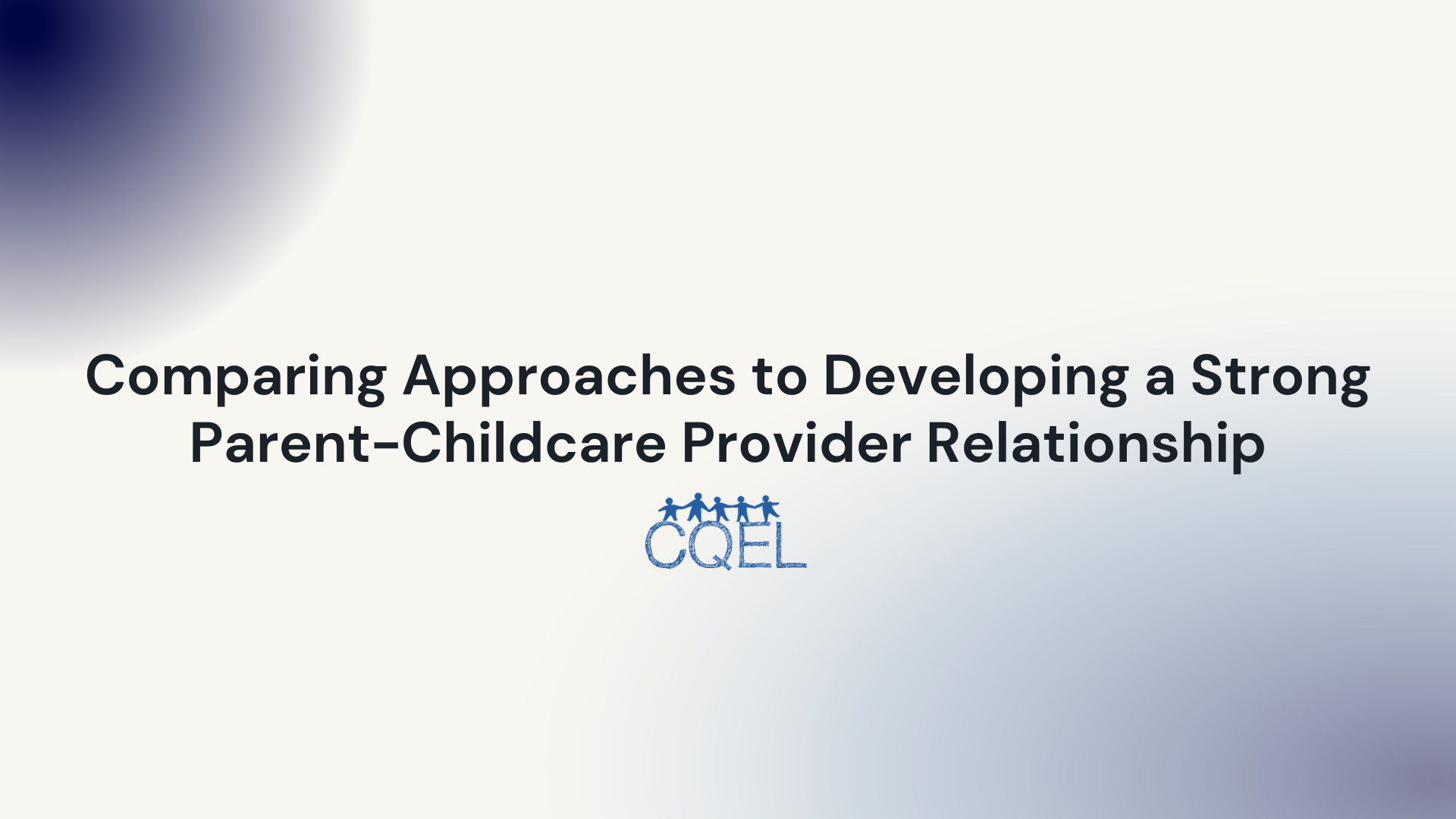Comparing Approaches to Developing a Strong Parent-Childcare Provider Relationship in California
Learn about the advantages and challenges of each approach and find guidance to implement the most effective strategy for your childcare center, aiming at strong relationships that foster children's well-being and development.

A strong parent-childcare provider relationship is essential for the success and well-being of children in any childcare setting. We will explore two different approaches to building these relationships in California: the traditional parent-teacher conference model and the more recently popular family engagement model. We will discuss the advantages and disadvantages of each method, helping childcare center directors to choose the most effective approach for their specific context.
Traditional Parent-Teacher Conference Model: The traditional parent-teacher conference model involves scheduled meetings between parents and childcare providers, typically occurring once or twice a year. These conferences allow parents and providers to discuss the child's progress, share concerns, and develop goals for the child's development.
Advantages:
- Provides a structured opportunity for parents and providers to discuss the child's progress and development
- Allows for focused, one-on-one conversations between parents and providers
- Can help to identify concerns or issues that may not have been apparent in day-to-day interactions
Disadvantages:
- Occurs infrequently, potentially limiting the depth and consistency of the parent-provider relationship
- May not provide enough time or flexibility for more in-depth discussions or problem-solving
- Can be intimidating for some parents and teachers, which may hinder open communication
Family Engagement Model: The family engagement model takes a more holistic approach, focusing on building strong relationships between parents, childcare providers, and the entire childcare community. There are six principles for effective family engagement, including co-design, two-way communication, reciprocal relationships, and systemic family engagement. This model emphasizes regular, ongoing communication and collaboration, as well as involving parents in various aspects of the childcare center, such as planning events, participating in classroom activities, and providing input on policies and procedures.
Advantages:
- Promotes a deeper, more consistent parent-provider relationship through regular communication and collaboration
- Encourages a sense of community and shared responsibility for the child's well-being and development
- Provides opportunities for parents to be more involved in their child's learning experiences and the childcare center as a whole
Disadvantages:
- May require more time and effort on the part of both parents and providers
- Can be challenging to implement effectively in larger childcare centers or those with limited resources
- Some parents may not be able or willing to participate fully in all aspects of the family engagement model
Open-Door Policy: An open-door policy encourages parents to visit the childcare center at any time during operating hours, allowing them to observe their child's experiences, interact with providers, and stay involved in their child's education.
Advantages:
- Promotes transparency and trust between parents and providers by allowing parents to see the daily activities and routines in the center
- Encourages ongoing, informal communication between parents and providers, which can help to address concerns or issues more quickly
- Provides opportunities for parents to participate in their child's learning experiences and interact with other children and families in the center
Disadvantages:
- May require additional staffing or resources to accommodate and support parent visits during operating hours
- Some parents may feel uncomfortable or intrusive when visiting the center unannounced
- This could potentially disrupt the daily routine or activities in the center if not managed appropriately as well as some teachers feel annoyed if lessons are interrupted or derailed
Technology-Assisted Communication: Technology-assisted communication involves using digital tools, such as email, text messaging, or specialized childcare apps, to facilitate regular communication between parents and childcare providers. This approach allows for quick updates, sharing of photos and videos, and virtual check-ins, even when in-person meetings are not possible.
Advantages:
- Allows for real-time updates and communication between parents and providers, promoting a sense of connection and involvement
- Can be more convenient for busy parents who may not have the flexibility to visit the center in person
- Provides a digital record of communication, making it easier to track progress, concerns, and goals over time
Disadvantages:
- May require additional training or resources to implement and maintain digital communication tools
- Can be impersonal, lack the warmth of face-to-face communication, or text be misinterpreted without voice inflections and not enough context
- Relies on access to technology and internet connectivity for both parents and providers, which may not be available or reliable for all families
Each approach has its unique advantages and challenges, and the most effective strategy for your childcare center will depend on the specific needs and preferences of your families, as well as the resources and infrastructure available at your center. By considering a variety of approaches and combining elements from each, childcare center directors can tailor their parent-provider relationship-building strategies to create strong, supportive connections that ultimately benefit the well-being and development of the children in their care.
By carefully considering the unique context of your childcare center and the specific needs of your families, you can choose the most effective approach to building strong, supportive relationships between parents and childcare providers, ultimately enhancing the quality of care and education for the children in your care.
